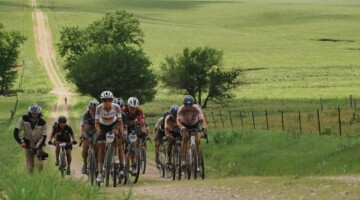Cyclocross Magazine has covered gravel for a decade now, and in that time we’ve seen gravel grow from small grassroots events to, in some cases, major events pros and former pros target because of their challenge and prestige. Thanks in part to the attention it got, this year’s Dirty Kanza 200 produced some “controversies” related to rules written and unwritten that drew attention in the gravel and at-large cycling communities.
Does gravel racing need more rules? We offer some thoughts and ask some questions to see what folks think. As always, feel free to speak up in the comments.
For those of us who follow cycling in the online space, the attention the Dirty Kanza 200 gravel race has been hard to miss during the past two weeks. The event drew the attention of gravel-related outlets and this publication—as it does every year—but some of the other big name publications also chipped in to make the annual Kansas gravel event arguably the most talked about cycling event for several days. Not bad for an event that started with just 34 riders a little over 10 years ago.
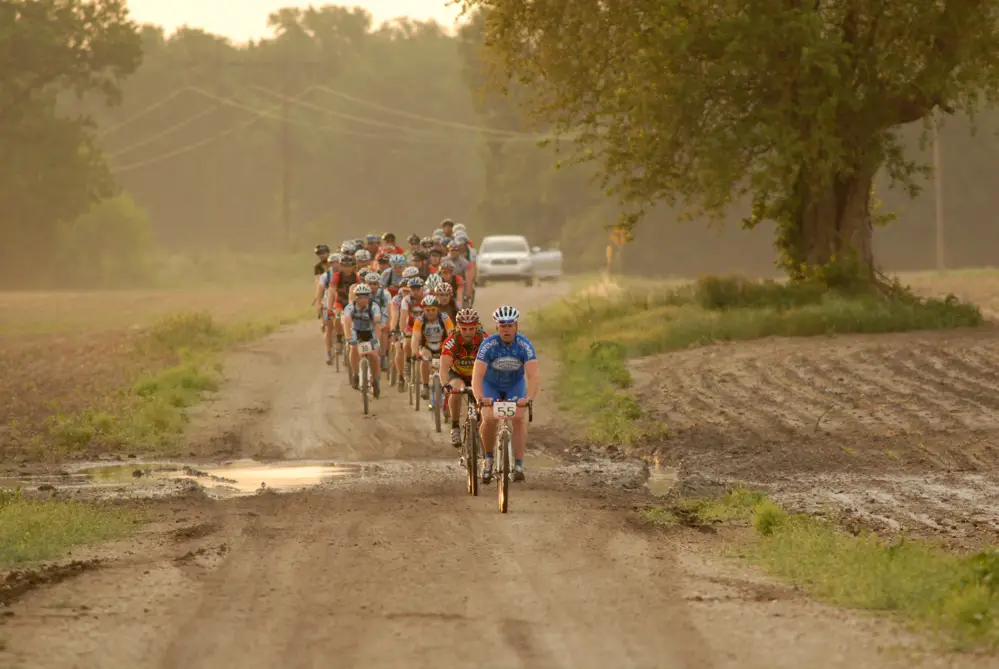
Cyclocross Magazine has covered the growth of the Dirty Kanza since 2008. photo: imdesigngroup.com
With the increased attention came controversies that were also hard to avoid. Before the race, talk centered around aero bars in mass start gravel events, and after the Kanza dust settled, it focused on racing strategies in mass start races where women and men race side-by-side as peers.
We pose some questions to see where the Cyclocross Magazine readership is at on aero bars and rules in gravel racing.
Gravel Growing Pains
Gravel racing is at an interesting place in its existence. One could argue it is not much different than where cyclocross was about a decade ago.
What started as a grassroots way to push limits and seek adventure is now the fastest growing discipline of cycling in the U.S. More and more pros and former pros are targeting races such as the Dirty Kanza, and publications such as this one are covering the DK200 as if it were a stage of the Tour de France or cyclocross World Cup.
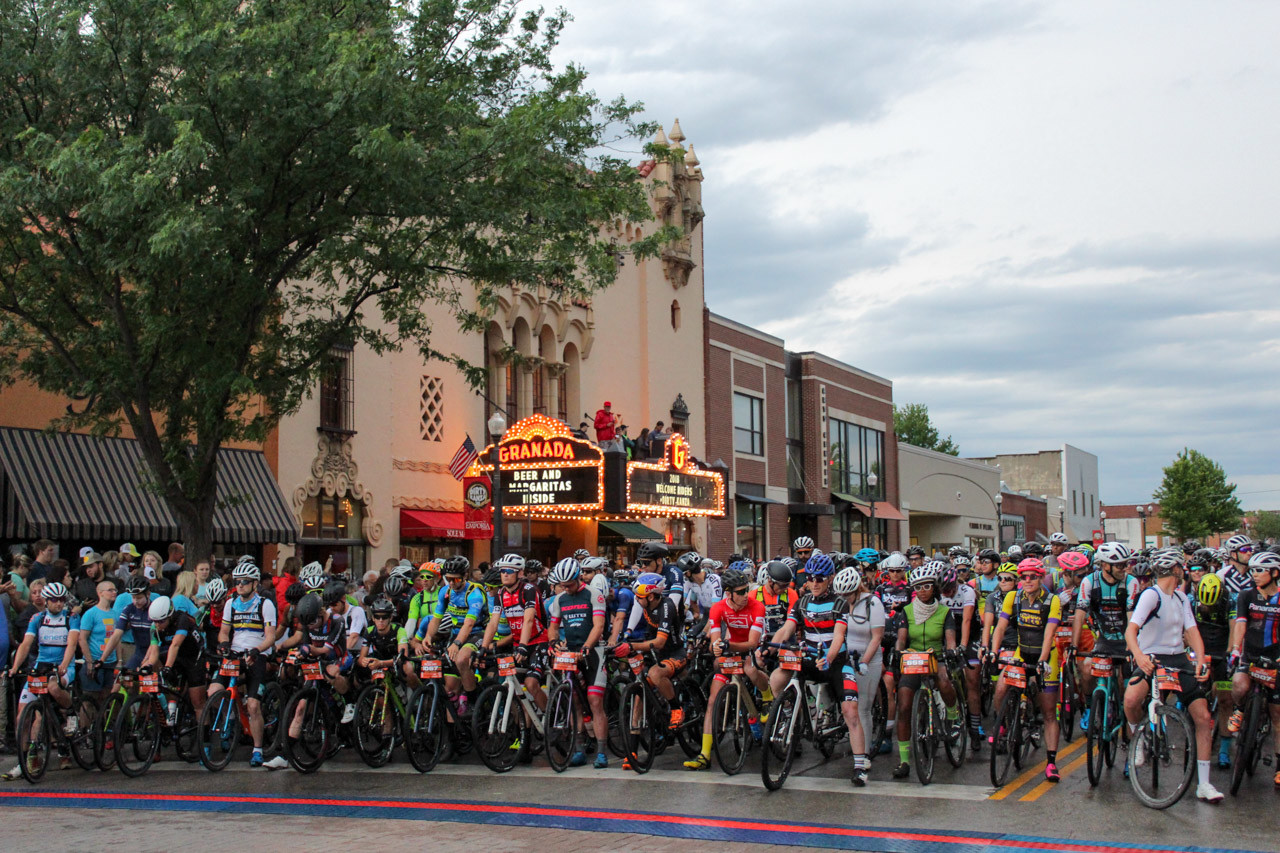
The Dirty Kanza 200 has grown in popularity and now many current and former pros target the event. 2018 Men’s Dirty Kanza 200. © Z. Schuster / Cyclocross Magazine
Gravel started as—and still largely is—unsanctioned racing with a loosely structured set of rules. Since only a small subset of a given field “races” for the win, and the prize at the end is usually a handshake or pat on the back, athletes have seemingly been able to regulate themselves and race against each other without a strict set of rules determining how they race. That said, the heart and soul of gravel racing is the amateurs who grab their closest bike and tackle gravel events for the challenge and not necessarily to win.
One argument we saw more than once last week is since gravel events are not sanctioned, we should not care so much who wins. However, winning a race like the Dirty Kanza carries a lot of prestige, and as 2017 winner Alison Tetrick noted in our interview before the race, creates new opportunities. “I would like to think it would be the same without winning, but by winning the race, I have been given some incredible opportunities that I am very thankful for,” she told us.
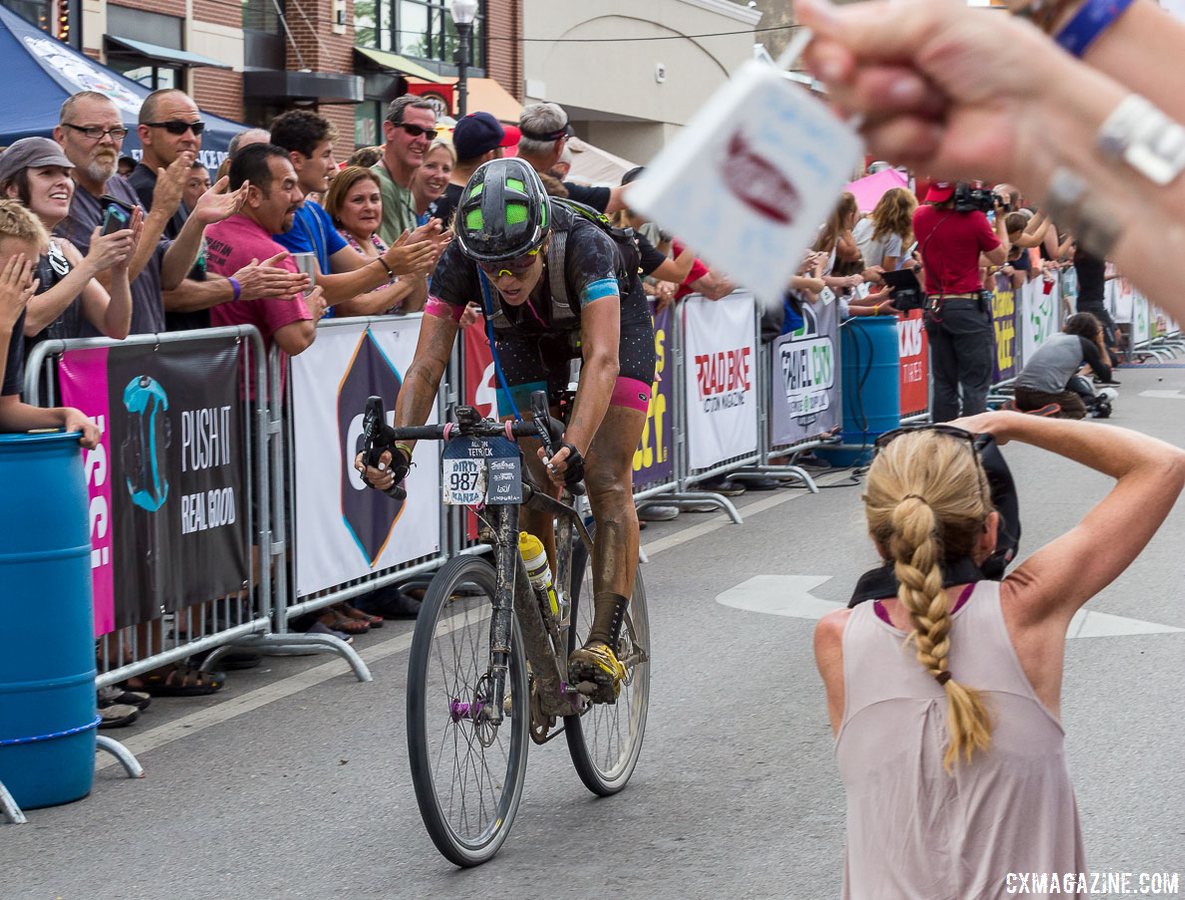
Alison Tetrick said winning the 2017 Dirty Kanza 200 has provided her with previously unavailable opportunities. © Christopher Nichols
All indications suggest gravel racing will continue to grow in the U.S. The question, as we see it, is if gravel races can remain unsanctioned and largely self-regulated, or if gravel organizers and racers need to arrive at a set of rules that may end up looking more like sanctioned disciplines such as cyclocross or road.
Before we get to the 2018 “controversies,” our first question is about why you participate in gravel events.
Aero Bars
If we are being honest, the great aero bar debate in the week leading up to the Dirty Kanza 200 amused us a bit. Last year, we profiled Mat Stephens’ winning bike that had aero bars and asked him about the aero bars in an interview, and then earlier this year we spoke with Jake Wells about his decision to use aero bars for the DK200 this year. In short, if you followed our coverage, you knew aero bars are becoming popular for gravel events.
Later, VeloNews did an interview with Mat Stephens and in its headline, focused on the aero bars and then Geoff Kabush stirred the pot as well. Not surprisingly, those stories got more people talking about the extensions that Greg Lemond made famous nearly 30 years ago.
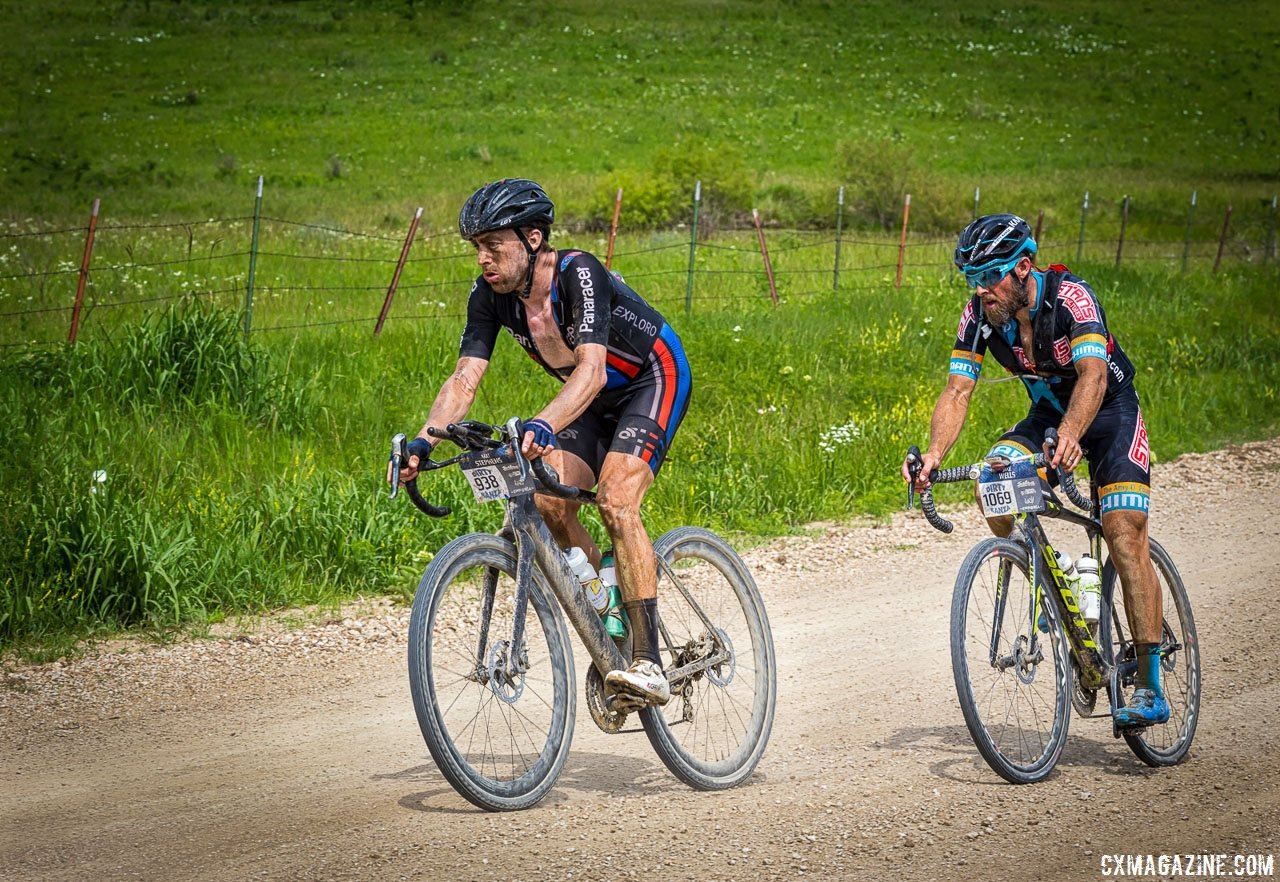
Mat Stephens won with aero bars in 2017. This year, it was a topic that drew a lot of attention. 2017 Dirty Kanza 200. © Christopher Nichols
Up until now, gravel race organizers have addressed aero bars in one of two ways. Races such as the Lost and Found have banned them from the beginning, while others such as the Dirty Kanza have said nothing about what riders can and cannot put on their bike. Either way, the rules of a given event create an even playing field, allowing all riders to choose to use them or be forced not to use them.
Right now, the future of aero bars in gravel events appears to be up to individual race directors. Crusher in the Tushar has banned them. However, in our interview with Ted King on Friday before the DK200, he touched on another way that speaks to the current self-regulation of gravel racing. “I’m entertained by the whole aero bar situation. I won’t lie, I’d be pleased to see aero bars so fiercely frowned upon that they’re not allowed.”
We should note that King opted for aero bars during his winning DK200 ride and walking around Commercial Street on Friday, it was hard to miss that many amateur riders also used them, so even if they are not viewed favorably, riders are still choosing to use them for their perceived benefits during the 206-mile event.
Rules for Mass Start Events
Gravel events started as, and primarily remain, mass start events where women and men start together and race the same distance. Since events are mass start, women share work with men and men share work with women. However, with separate titles given to the top woman and man, in retrospect it seems inevitable that a gray area with this structure would arise.
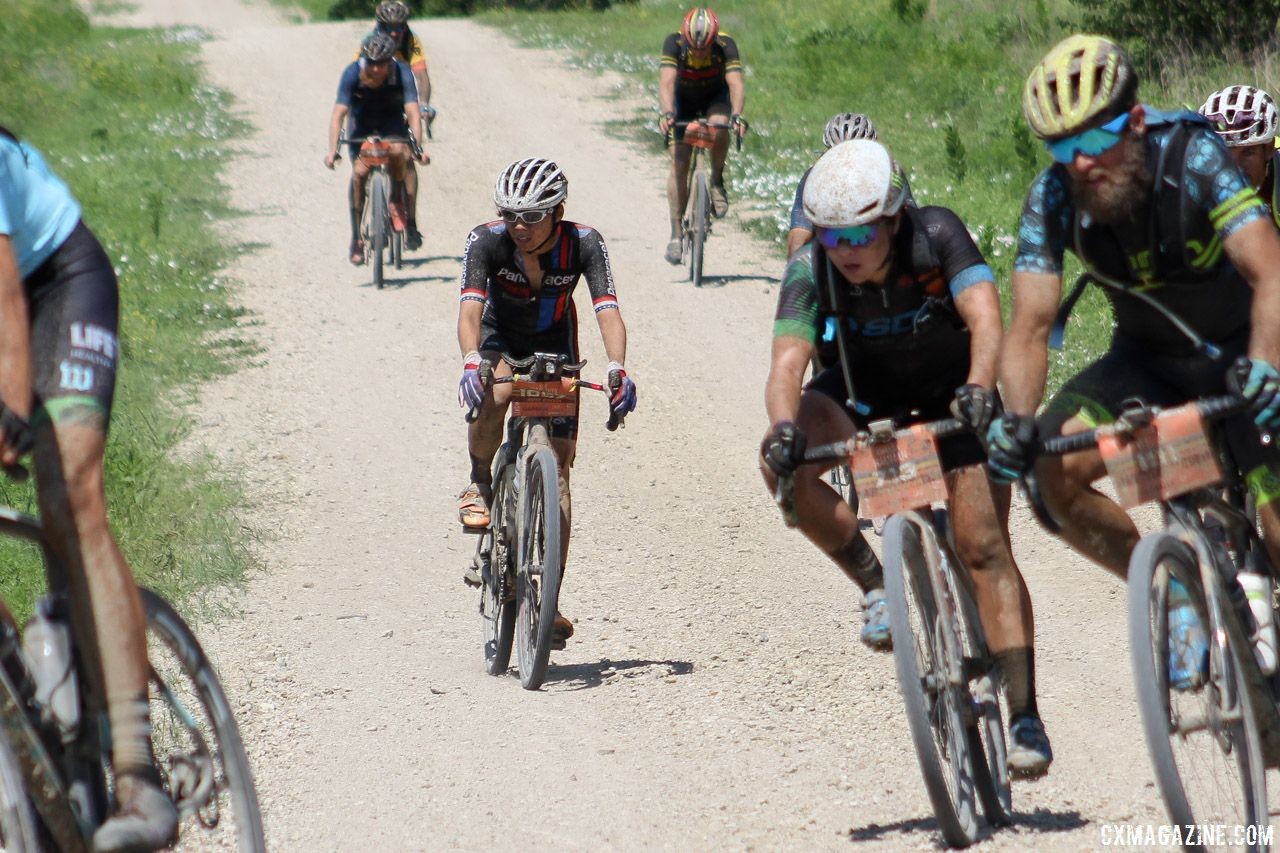
Gravel events provide a chance for women and men to ride the same distance in one mass start field. 2018 Dirty Kanza 200. © Z. Schuster / Cyclocross Magazine
Before we continue, a couple things are true about the situation that caused this controversy at the 2018 Dirty Kanza 200. The first is that Kaitie Keough rode together with her husband Luke for the last 120 miles or so of the race after the group they were in broke apart. The second is that Keough broke zero written rules (which are available here) in winning the Women’s race.
Moving forward, we do not want to dwell on this specific case because if it was not a wife and husband riding together, it would have been something else that forced this conversation. In fact, in 2016, the issue of what the definition of “neutral support” is for the Dirty Kanza 200 came up after a rider was disqualified for what he viewed was a questionable infraction.
The Dirty Kanza Rider’s Bible has 25 written rules. However, what the discussion surrounding this year’s Women’s race suggests is that some believe there are other “unwritten rules” that Elite riders should abide by.
Unwritten rules are nothing new in cycling, especially on the road. In 2015, Vincenzo Nibali drew criticism when he attacked after Chris Froome suffered a mechanical during the Tour de France. Last year it happened again with Fabio Aru. Nibali and Aru did not break any actual rules, but they still faced a firestorm for violating the unwritten rule that you do not attack the yellow jersey when they suffer bad luck.
Other sports have unwritten rule as well. In baseball, it is considered taboo to bunt for a base hit in the last innings of a no-hitter. In soccer, a team is supposed to kick the ball out of bounds when an opposing player goes down. The list goes on.
What the 2018 Dirty Kanza controversy suggests is that maybe there are unwritten rules for gravel racing, but if anything is clear, it’s that no one agrees on what they are.
One issue we keep coming back to is if gravel races can retain their current semi-regulated, grassroots structure in the face of growing popularity, prestige and even payouts, or if “unwritten rules” need to be codified and a more rigid set of rules needs to be established to regulate gravel racing.
What do you think? Add your thoughts in the poll and comments below.


























